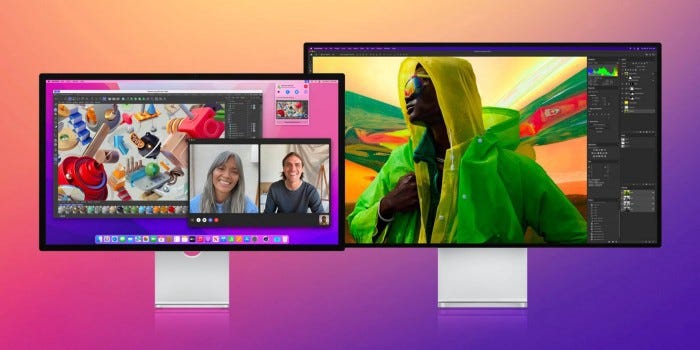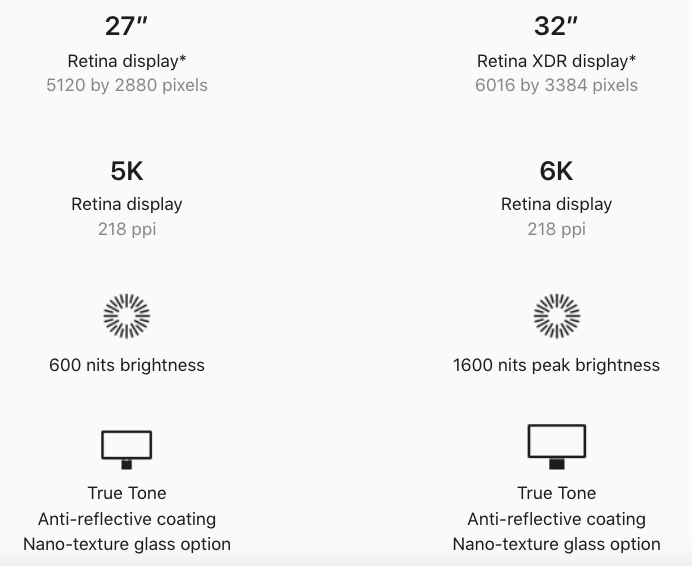Comparing Apple’s Studio Display and Pro Display XDR
Written on
Introduction
Apple's recent Spring event was a significant occasion, unveiling numerous new products, with the much-anticipated Studio Display taking center stage. The excitement surrounding the announcement was palpable, as fans had been eagerly waiting for Apple to introduce a new display option. Now, with both the Studio Display and Pro Display XDR available, consumers face a stark contrast in pricing: the Pro Display XDR starts at an impressive $4,999, while the Studio Display is a more accessible $1,599. This leads to a crucial question: what accounts for such a vast difference in cost?
Understanding Pricing
To grasp the true cost of these displays, it's essential to consider that the listed prices might not reflect your final payment due to necessary add-ons. For instance, if you want non-texture glass to minimize glare while maintaining image quality, it will set you back an additional $300 for the Studio Display and a steep $1,000 for the Pro Display.
Furthermore, the Pro Display does not include a stand, which means many buyers will need to spend an extra $1,000 for a stand that offers height, tilt, and rotation features. In contrast, the Studio Display comes with a stand, but upgrading to match the Pro Display’s features will cost an additional $400. Therefore, potential buyers should be prepared for these added expenses when making their decisions.
Design

At first glance, both displays appear quite similar, featuring a sturdy aluminum construction, thin bezels, and a robust aluminum stand. However, the Pro Display showcases the signature cheese grater design on its back, while the Studio Display opts for a more traditional aluminum rear adorned with the Apple logo. The most significant distinction lies in their size: the Pro Display boasts a 32-inch screen compared to the 27-inch display of the Studio.
Display Features

When it comes to display specifications, this is where the two products diverge. The Pro Display, being 32 inches, offers a higher resolution of 6K, while the Studio Display presents a 5K resolution. Despite the resolution difference, both displays share the same pixel density of 218 PPI. They support wide color (P3), "True Tone" technology for a more natural viewing experience, and anti-reflective coatings, although neither supports ProMotion for a refresh rate of 120 Hertz.
Both displays offer the option of nano-texture glass, which helps reduce glare while preserving image quality. A notable difference is in brightness: the Studio Display reaches 600 nits, whereas the Pro Display XDR can peak at an impressive 1,600 nits, enabling HDR support that the Studio lacks.
Features and Technology
The Studio Display takes the lead in terms of modern features, having been released later than the XDR. It includes a camera with "Center Stage," six speakers, and an array of three high-quality microphones, all powered by an A13 chip for enhanced performance. Conversely, the XDR's main selling point is its "Extreme Dynamic Range" capability, which offers exceptional color and contrast across a wide viewing angle.
Ports
Both models come equipped with four ports: three USB-C ports and one Thunderbolt 3 (USB-C) port, allowing for MacBook charging.
Conclusion
Apple has often faced scrutiny for its use of the term "Pro" in its product names. However, the Pro Display XDR does exhibit features that justify its "Pro" designation. Initially, I believed the XDR was a worthy investment, but the arrival of the Studio Display raises questions about its value. Is the additional $3,400 for a few extra inches and HDR really justified?
With the cost of one XDR display, one could purchase three Studio Displays and create an impressive setup. As someone who has not required a high-end monitor for my work, I would love to hear from professionals in the field. After the launch of the more affordable Studio Display, would you still choose the XDR, and does it retain any unique qualities that warrant its high price? Or will it remain in Apple’s lineup until a more competitive display emerges?